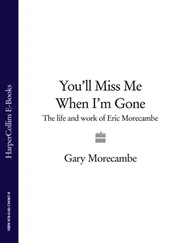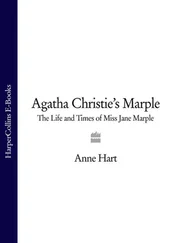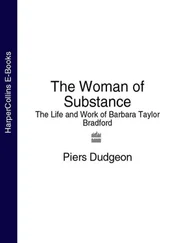1 ...7 8 9 11 12 13 ...19 On 19 November, Philpot was once again led blinking out of his cell and brought before the bishop. This time, Bonner had company: the Bishop of Rochester, the Chancellor of Lichfield and a Dr Chedsey. And another young scholar was also in attendance, who Bonner introduced to Philpot as one of his chaplains: John Dee. What was Dee, who might have been a cohabitee in the coalhole, doing there? Had the Protestant poacher turned Catholic gamekeeper? Unfortunately, no record remains of Dee’s own interrogation by Bonner, nor of his subsequent treatment. He disappeared into St Paul’s a suspected heretic, and now emerged an obedient chaplain.
The only record of Philpot’s imprisonment and examination is contained in Foxe’s Acts and Monuments, first published in English in 1563, after Elizabeth had succeeded to the throne, returning the country to Protestantism. It is a significant historical document, but by no means a politically or religiously neutral one. Though covering the entire history of religious persecution, it focuses with particular intensity on ‘the bloody murderings’ of ‘godly martyrs’ during Mary’s reign. Through the testimony of Mary’s Protestant victims accompanied by gruesome illustrations of beatings and burnings, Foxe embroidered a vivid but decidedly Protestant picture of Catholic cruelty. It is thus hardly surprising that the account of Philpot’s interview, based on his own account, does not portray John Dee in a flattering light.
The examination was to prove a turning point. It began with Bonner asking Philpot why he had kept his interrogators waiting. The bishop’s tone was now very different to the friendly one of their first meeting.
‘My lord, it is not unknown to you that I am a prisoner, and that the doors be shut upon me,’ Philpot replied.
This did not satisfy Bonner. ‘We sent for thee to the intent thou shoulds’t have come to mass. How say you, would you have come to mass, or no, if the doors had been sooner opener?’
‘My lord, that is another manner of question,’ Philpot replied. And Bonner did not pursue it, instead engaging Philpot in a theological debate on the subject of the unity of the church and the papacy. In particular, Philpot was asked to discuss the works of the third-century philosopher St Cyprian of Carthage who, according to Bonner, declared, ‘There must be one high priest, to which the residue must obey,’ a clear endorsement of Papal authority. Philpot disputed this interpretation, arguing thiat St Cyprian was referring to himself, as he was then patriarch of Africa.
At this point Dee intervened. ‘St Cyprian hath these words: “That upon Peter was builded the church, as upon the first beginning of unity”.’ Philpot replied with another quote, from a book of Cyprian’s that Dee himself would later have in his library: ‘In the person of one man, God gave the keys to all, that he, in signification thereby, might declare the unity of all men.’
After a further exchange, Dee announced that he was leaving the room, whereupon Philpot, losing his temper, called after him: ‘Master Dee, you are too young in divinity to teach me in the matters of my faith. Though you be learned in other things more than I, yet in divinity I have been longer practised than you.’ It was a clear reference to Dee’s reputation as a magician, which was obviously understood by all those present. Dee did not reply.
Dee did not attend any further interviews with Philpot which from this point on became increasingly hostile. However, at around the same time he did attend another examination with one of the newer arrivals at the Bishop’s palace, Bartlet Green. Dee mentioned Green in an account of his arrest written many years later, in which he described himself as having been a ‘prisoner long’ at the Bishop’s palace, ‘and bedfellow with Barthlet Green, who was burnt.’ 6
This was an economical version of the truth. In a letter to Philpot intercepted by Bonner, Green reported the encounter as follows:
I was brought into my lord [Bonner]’s inner chamber… and there was put in a chamber with master Dee, who entreated me very friendly. That night I supped at my lord’s table, and lay with master Dee in the chamber you [i.e. Philpot] did see. On the morrow I was served at dinner from my lord’s table, and at night did eat in the hall with his gentlemen; where I have been placed ever since, and fared wonderfully well. 7
That is the only reference to Dee that Green gave in his submission.
Poor Bartlet did not fare so wonderfully well in the coming days, and neither did Philpot, who evidently attempted to engineer an escape. The Bishop’s men discovered a dagger sewn into the belly of a roasted pig delivered to him. In punishment, Bonner sent Philpot to be locked up in the coalhouse stocks, and a few days later himself came to the coalhouse to see his prisoner. Bonner claimed it was the first time he had ever visited the place and he thought it too good for Philpot. He ordered his guards to seize the prisoner, and to follow. He led them to the ‘privy door’ leading from his palace into St Paul’s, where his prison warder was waiting.
The keeper led the prisoner up the nave of the cathedral, past the reinstated rites and shrines Philpot so despised, and up the stone steps that led to Lollards’ Tower. Many fellow heretics were already incarcerated in one of the tower’s chambers, and forced to sit or lie with their feet and hands locked into a wall of wooden stocks, half-deafened by the din of the bells. But Philpot was taken along the walkway across the west side of the cathedral, into a tunnel leading into the bell tower on the opposite side, the ‘Blind Tower’. There he was confined in a chamber ‘as high almost as the battlements of Paul’s’ with a single east-facing window ‘by which I may look over the tops of a great many houses, but see no man passing into them’. He was searched and a number of letters were found hidden in his clothes, which he tried in vain to tear up as the guards pulled them from him. One of these letters was addressed to Bartlet Green.
Philpot’s interrogations did not stop, but they were now aimed solely at incriminating rather than converting him. His letter to Green, painstakingly pieced together, contained a reference to Dee, ‘the great conjuror’. ‘How think you, my lords, is not this an honest man to belie me, and to call my chaplain a great conjuror?’ Bonner asked the assembled Bishops. They obligingly smiled at his irony.
Philpot realised that his position was now hopeless. He asked his servant, whose visits provided his only remaining link with the outside world, to procure a ‘bladder of black powder’, but it was intercepted by Bonner’s men. Philpot explained that it was to make ink, but Bonner’s suspicion must have been that it was filled with gunpowder. Philpot no doubt planned to hang the pouch around his neck in the event that he was burned, to provide an early release from lingering agonies.
Formally condemned on 16 December 1555, Philpot was held in a small chamber in preparation for the handover to Newgate’s chief keeper – the moment when the ecclesiastical authorities returned to their chapels, leaving the secular arm of government to conclude the business. The first words of Philpot’s new keeper, Alexander, were: ‘Ah! Hast thou not done well to bring thyself hither?’ This cheery greeting was immediately followed by an order to hold the prisoner down on a block of stone, and lock his legs using as ‘many irons as he could bear’, which Alexander would remove only if Philpot paid him four pounds.
An appeal to the civic authorities brought gentler treatment. The city sheriff, Master Macham, ordered that the prisoner’s irons be removed and his personal possessions restored. Philpot was then taken to Newgate where he was given a cell to himself. The following day he ate his final meal and was told to make his preparations. He was awoken at eight the following morning. His guards carried him to the place of execution as ‘the way was foul’. As they lifted him up, he apparently joked ‘What? Will ye make me a pope?’
Читать дальше












